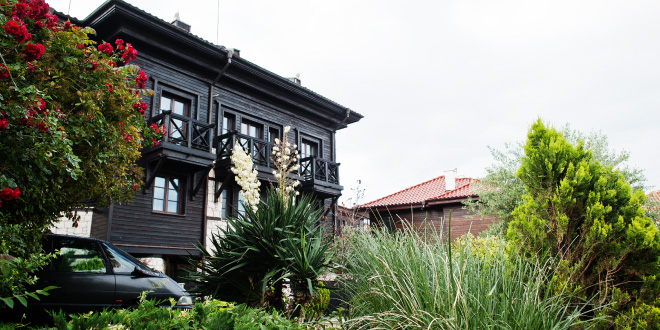Discover ideal homes for your lifestyle. Explore features, locations, and tips on buying or improving your dream property. Start your journey to perfect living now!
Introduction
Finding ideal homes isn’t just about square footage or location—it’s about creating a place that perfectly aligns with your lifestyle, budget, and future plans. Whether you’re dreaming of a cozy suburban cottage or a sleek urban condo, the quest for the perfect property can feel overwhelming. In this comprehensive guide, we’ll break down the key features, locations, and design elements that help transform any house into an “ideal” home. We’ll also share tips on budgeting, interior design, and even a few personal anecdotes to inspire you along the way.
Table of Contents
What Makes a Home “Ideal”?
An “ideal home” is subjective—one person’s dream might be another’s compromise. However, most people share a few common desires:
- Comfort & Functionality: Spaces that accommodate daily routines without feeling cramped.
- Aesthetic Appeal: Stylish design elements that resonate with personal taste, whether modern, traditional, or somewhere in between.
- Practical Value: A property that fits your budget, with potential for resale or long-term investment.
- Emotional Connection: A feeling of warmth and belonging as soon as you walk through the door.
This is where the concept of “dream homes” or “desired homes” comes into play. Your ideal house might have a spacious backyard for summer barbecues, or it might be a high-rise condo with a mountain view. Whatever your vision, it’s about striking the right balance between wants and needs.
Key Features & Amenities
3.1 Spacious & Modern Homes
For many people, an ideal living space means having room to breathe—both literally and figuratively. Open floor plans, high ceilings, and ample natural light can make even modest square footage feel expansive. Modern homes often incorporate:
- Minimalist design: Clean lines and uncluttered spaces
- Neutral color schemes: Shades of gray, beige, or white to keep the environment serene
- Flexible layouts: Spaces that can easily adapt to changing family sizes or lifestyle needs
When combined, these elements create a home that feels both sleek and inviting.
3.2 Energy-Efficient & Smart Homes
In an era of rising utility costs and growing environmental awareness, energy-efficient homes have become a top priority. This can include:
- Solar panels to reduce electricity bills
- High-efficiency HVAC systems that maintain comfortable indoor temperatures
- Insulated windows & doors to prevent heat loss or gain
- Smart home technology for automated lighting, temperature control, and security
An eco-friendly approach not only helps the planet but also cuts down on long-term expenses—a win-win for modern homeowners.
3.3 Pet-Friendly Homes
If you have a four-legged friend, pet-friendly homes are essential. Look for:
- Durable flooring like laminate or tile that can handle claws and spills
- Secure fencing to keep pets safe in the yard
- Ample outdoor space for exercise and play
- Neighborhood amenities such as nearby dog parks or walking trails
A pet-friendly setup ensures that every member of the family—human or otherwise—can enjoy a comfortable life.
3.4 Family Homes & Single-Family Options
Families often prioritize single-family homes for the privacy and outdoor space they provide. Key considerations include:
- Number of bedrooms for growing kids or frequent visitors
- Proximity to good schools and safe neighborhoods
- Spacious yards for kids to play or for hosting weekend gatherings
When done right, these homes become the backdrop for cherished memories—birthday parties, family dinners, and lazy Sunday mornings.
3.5 Townhouses & Condos
Not everyone wants the responsibility of a large yard or standalone property. Townhouses and condos can be ideal for:
- First-time buyers who want to ease into homeownership
- Retirees looking to downsize and reduce maintenance
- Busy professionals who prefer low upkeep and a community feel
Shared amenities like gyms, pools, or co-working spaces often come with these housing types, adding extra value to your purchase.
Location & Lifestyle
4.1 Waterfront & Mountain View Homes
There’s a certain allure to waterfront homes—the soothing sound of waves or the serene calm of a lake. Mountain view homes, on the other hand, offer breathtaking scenery and a sense of escape from urban sprawl. Both settings can boost a property’s desirability, but keep in mind:
- Maintenance costs: Salt air can corrode materials faster, and mountainous terrain may require special care.
- Travel considerations: Waterfront or mountainous locations may be further from city centers, affecting commute times or access to amenities.
Still, the tranquility and stunning vistas often make the extra planning worthwhile.
4.2 Suburban & Rural Homes
For those who crave a blend of convenience and community, suburban homes might be the sweet spot. Suburbs typically offer:
- Close-knit neighborhoods with parks, schools, and shopping centers
- Moderate property prices compared to urban cores
- Family-friendly events like block parties or holiday gatherings
If you prefer wide-open spaces, rural homes provide even more seclusion—think large lots, minimal neighbors, and the freedom to expand or build additional structures over time.
4.3 Urban Living & Community Preferences
City lovers might gravitate toward urban homes, especially if they thrive on cultural diversity, nightlife, and job opportunities. Living in an urban setting often means:
- Walkability to shops, restaurants, and entertainment
- Condos or high-rise apartments that maximize limited space
- Public transportation options for easier commutes
Understanding your neighborhood preferences—whether you’re a fan of vibrant downtown energy or quieter outskirts—helps narrow your search for an ideal home.
Interior Design & Aesthetics
5.1 Open-Concept & Natural Light
A major trend in home improvement is the shift toward open-concept living. By removing walls that traditionally separated the kitchen, dining, and living areas, you get:
- Better flow for social events
- Ample natural light that brightens the entire space
- A feeling of spaciousness even in smaller homes
Large windows, skylights, or glass doors further enhance this airy vibe, creating a home that feels connected to the outdoors.
5.2 Modern Kitchen & Spacious Bedrooms
Modern kitchens often serve as the hub for entertaining. Common features include:
- Quartz or granite countertops for durability
- High-end appliances that balance form and function
- Island seating for casual meals or socializing during meal prep
In the bedroom department, spacious bedrooms with walk-in closets and en-suite bathrooms elevate daily routines. An extra seating area or reading nook can also turn a bedroom into a personal retreat.
5.3 Home Office & Outdoor Living Space
With remote work on the rise, a dedicated home office is increasingly important. Look for:
- Sound insulation or a separate floor to minimize distractions
- Natural lighting to reduce eye strain
- Ergonomic considerations like built-in shelving or adjustable desks
Don’t forget the outdoors! Outdoor living space—whether a patio, deck, or screened porch—expands your living area and provides a refreshing spot for relaxation or dining al fresco.
Financial & Practical Considerations
6.1 Affordable Homes & First-Time Buyers
For many, the idea of “ideal homes” includes a budget-friendly price. Affordable homes come in all shapes and sizes, from smaller single-family houses in up-and-coming neighborhoods to condos in revitalized urban areas. If you’re a first-time homebuyer, focus on:
- Mortgage pre-approval to understand your spending limit
- Down payment assistance programs or grants
- Negotiation strategies to get the best deal in a competitive market
6.2 Investment Properties & Retirement Homes
If you’re more interested in long-term gains or future planning, investment properties and retirement homes might be on your radar. Key factors to consider include:
- Rental potential: Neighborhood demand, local job market, and short-term rental regulations
- Maintenance costs: Upkeep for older properties or specialized amenities like a pool
- Accessibility features: Single-level layouts or wheelchair ramps for retirement-friendly living
Investment-minded buyers often look for homes in areas with consistent property value growth, ensuring a stable return on their investment.
6.3 Homeownership & Market Trends
Staying updated on the real estate market can significantly influence your choices. According to the National Association of REALTORS®, market shifts can happen quickly based on interest rates, local employment trends, and national economic factors. Keep an eye on:
- Inventory levels: A shortage of homes for sale can drive prices up, while a surplus might lead to more negotiating power for buyers.
- Interest rates: Even a small rise in mortgage rates can affect monthly payments and overall affordability.
- Local job market: Regions with growing industries often see increased demand for housing.
Understanding these elements can help you time your purchase for the best possible deal.
Real-World Examples & Personal Anecdotes
- Case Study: The Jones Family
- Scenario: A young couple with two kids searching for a suburban home. They wanted a spacious backyard, good schools, and a community feel. After months of hunting, they found a 3-bedroom single-family home in a developing neighborhood. The house wasn’t massive, but it had a modern kitchen, an open-concept layout, and a friendly community vibe—perfect for their growing family.
- Outcome: By prioritizing location and essential features, they landed their “ideal home” without exceeding their budget.
- Personal Anecdote: I once lived in a townhouse that checked many “ideal” boxes: it was affordable, close to my workplace, and had a small yard for my dog. Although it wasn’t a sprawling estate, the sense of comfort and convenience made it feel just right. Sometimes, “ideal” is less about size and more about how well a space fits your life.
Expert Insights & Quotes
“The concept of an ‘ideal home’ evolves as our life circumstances change. It’s crucial to identify which features matter most right now, while still planning for the future.”
— Olivia Green, Certified Real Estate Agent
“Don’t overlook the neighborhood when envisioning your dream property. A home can be renovated, but location is a fixed asset.”
— Marcus Reid, Urban Development Specialist
Frequently Asked Questions (FAQs)
Q1: What are the key steps to finding ideal homes for my family?
- Answer: Start by listing your must-haves (like number of bedrooms or location), then determine your budget. Tour various properties and neighborhoods to compare. Finally, work with a reputable real estate agent who understands your goals.
Q2: How can I make my existing home feel more like my ‘dream home’?
- Answer: Simple upgrades—like repainting walls, decluttering, or adding modern lighting—can transform your living space. Focus on one room at a time, such as renovating your kitchen or creating a functional home office.
Q3: Are modern or contemporary homes more expensive than traditional styles?
- Answer: It depends on factors like location, materials, and finishes. While modern architecture can involve pricier elements like expansive glass panels, some older homes require costly renovations. Always assess total costs before deciding.
Q4: Do I need a large budget for an energy-efficient home?
- Answer: Not necessarily. While advanced eco-friendly features can be expensive upfront, basic steps—like proper insulation or Energy Star appliances—are budget-friendly and pay off through lower utility bills.
Q5: Is an open-concept floor plan always better?
- Answer: Open-concept designs are popular for their spacious feel and social benefits. However, some people prefer separate rooms for privacy or noise control. It’s all about personal preference.
Q6: Can I find an ideal home if I have unique requirements (like a home gym or specialized workshop)?
- Answer: Yes, though it might take longer. Be clear about your must-haves and consider homes with extra space or unfinished basements you can convert. Alternatively, new construction or custom builds offer full customization.
Q7: What if I want to buy a home that’s also an investment property?
- Answer: Look for areas with strong rental demand or up-and-coming neighborhoods. Research local regulations on rentals, especially if you plan to list on platforms like Airbnb. A real estate agent experienced in investment properties can guide you.
Q8: How do I keep up with interior design trends without constant remodeling?
- Answer: Focus on timeless basics (like neutral walls or classic flooring) and incorporate trends through easily replaceable items—like throw pillows, rugs, or accent pieces. This approach keeps your home stylish without major overhauls.
Key Takeaways
- Ideal homes blend comfort, design, and functionality—tailored to your lifestyle.
- Spacious & modern homes often emphasize open-concept layouts and energy-efficient features.
- Location is pivotal: waterfront, mountain view, suburban, or urban—each setting offers unique perks.
- Interior design trends like open-concept living, natural light, and modern kitchens can elevate your daily life.
- Financial aspects—affordability, investment potential, and market trends—play a crucial role in choosing the perfect property.
- Keep your personal needs in focus, whether you’re a first-time buyer, an investor, or someone seeking a retirement home.
Conclusion & Call to Action
Finding ideal homes isn’t just about chasing a vision of perfection. It’s about striking the right balance between design, budget, location, and your personal goals. Whether you’re a first-time buyer eyeing an affordable condo or a seasoned homeowner looking to upgrade to a luxurious waterfront retreat, remember that the “ideal” aspect often lies in the details that matter most to you.
Ready to take the next step?
- Explore Listings: Check out local real estate websites or connect with an experienced agent.
- Plan Your Finances: Get pre-approved for a mortgage and set a realistic budget.
- Stay Informed: Subscribe to our newsletter for the latest on home improvement, interior design trends, and market insights.
By focusing on what truly matters—whether that’s proximity to good schools, a spacious backyard, or a state-of-the-art kitchen—you can turn any house into your personal haven. So go ahead, take that leap, and move closer to the ideal home you’ve always envisioned.
 NexMove Home & Investment Guide Find Your Perfect Property, Invest Wisely.
NexMove Home & Investment Guide Find Your Perfect Property, Invest Wisely.





